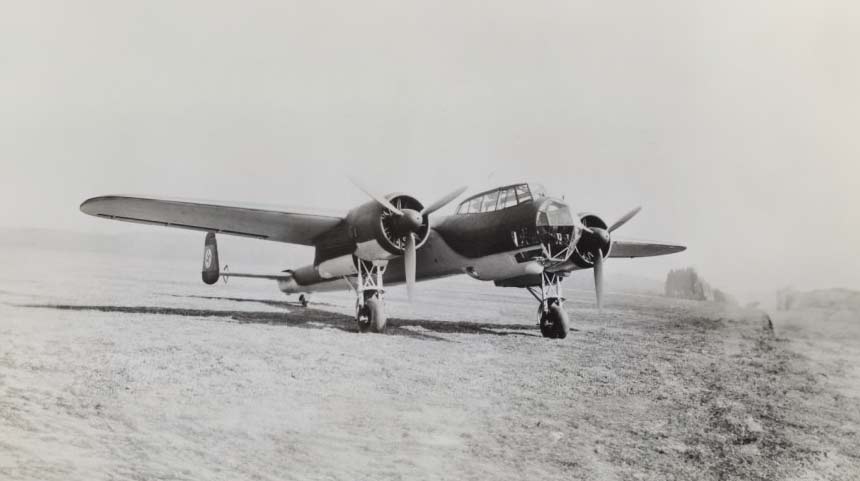The Dornier Do 17, known as the “Flying Pencil,” was a slim, fast, and versatile German light bomber used extensively in the early stages of WWII.
This article provides an in-depth look at the Dornier Do 17, a notable German light bomber of World War II, known for its distinctive slim design. We explore its development history, design features, performance characteristics, and its role in military operations. The Do 17’s development is contextualized within the interwar period’s rapidly evolving military aviation landscape, and its design and performance are analyzed in detail. The aircraft’s military use, including its operational roles and effectiveness in combat, is discussed, concluding with an evaluation of its impact and legacy in aviation history.
The Dornier Do 17, often referred to as the “Flying Pencil” due to its slender fuselage, was a light bomber developed by Germany in the 1930s. It played a significant role in the Luftwaffe’s early campaigns during World War II, showcasing the period’s evolving aerial warfare tactics and technologies.
History of the Development of the Dornier Do 17:
In the early 1930s, the rapidly changing political and military landscape in Europe led to a renewed focus on developing advanced military aircraft. Germany, under the leadership of the Nazi regime, was covertly rebuilding its air force in violation of the Treaty of Versailles. The Dornier Do 17 was a product of this rearmament effort.
The development of the Do 17 began in 1934 by the Dornier Company, led by chief designer Claudius Dornier. Initially conceptualized as a fast mail plane, it was quickly adapted for military use in response to the Luftwaffe’s requirements for a light bomber that could outrun contemporary fighters.
The first prototype, Do 17 V1, flew on November 23, 1934. It featured a narrow fuselage and a distinctive shoulder-wing design. While the aircraft did not receive a NATO nickname due to its pre-NATO era development, it quickly became known as the “Flying Pencil” for its slender appearance.
The Do 17 was developed during a period of significant innovation in aviation. The concept of fast, light bombers that could evade enemy fighters by speed rather than defensive armament was gaining traction. This philosophy influenced the Do 17’s design and development, positioning it as a front-runner in a new generation of combat aircraft.
Design of the Dornier Do 17:
The Dornier Do 17’s design was marked by its slim, streamlined fuselage, measuring 15.8 meters (51 feet 10 inches) in length, with a wingspan of 18 meters (59 feet) and a height of 4.56 meters (15 feet). The aircraft’s narrow profile was intended to reduce drag and enhance speed.
Constructed primarily of duralumin, the Do 17 featured a semi-monocoque structure, allowing for a lightweight yet robust airframe. The twin-engine configuration employed two BMW or Bramo radial engines, depending on the variant.
The bomber’s crew typically consisted of four: a pilot, bombardier, radio operator, and rear gunner. Defensive armament varied across models but generally included several machine guns mounted in the nose, dorsal, and ventral positions.
One of the key design innovations of the Do 17 was its broad wing, which provided lift and stability, contributing to its impressive maneuverability for a bomber. However, the aircraft’s slim fuselage limited bomb load capacity, and the emphasis on speed and agility came at the cost of defensive armament and armor, leaving it vulnerable to enemy fighter attacks.

Performance of the Dornier Do 17:
Powered by two radial engines, the Do 17 could achieve speeds up to 427 kilometers per hour (265 mph), with an operational range of approximately 1,420 kilometers (880 miles). It had a service ceiling of around 8,200 meters (26,900 feet).
In comparison to its contemporaries like the British Bristol Blenheim or the Soviet Tupolev SB, the Do 17 was faster and more agile, but it lagged in bomb load capacity and defensive capabilities. Its performance as a light bomber was exemplary in the early stages of WWII, but as the war progressed and enemy air defenses became more formidable, the limitations of its light armament and payload became apparent.
Military Use and Combat of the Dornier Do 17:
The Dornier Do 17 saw extensive service in the early years of World War II, participating in campaigns such as the Battle of Britain, the invasion of Yugoslavia, and operations over the Western Front. Its primary role was as a light bomber, targeting strategic sites and providing support for ground operations.
The aircraft’s armament consisted of a limited bomb load (around 1,000 kg or 2,200 lbs) and defensive machine guns. While effective in the early war years, the Do 17 struggled against increasingly sophisticated Allied fighter aircraft and air defenses. Notably, its lack of protective armor made it vulnerable to enemy fire.
The Do 17 faced competition from more advanced bombers like the Heinkel He 111 and later the Junkers Ju 88, which offered greater payload capacities and better defensive armament. As the war progressed, the Do 17 was gradually phased out in favor of these more capable designs.
The Dornier Do 17 was not extensively exported and primarily served within the Luftwaffe. Its operational use declined significantly after 1941, with surviving aircraft being relegated to secondary roles such as training or transport. The Do 17 was eventually replaced by more advanced bomber designs, marking the end of its frontline service.
The Dornier Do 17 remains an iconic aircraft in the annals of military aviation history. As a symbol of early WWII aerial combat, it embodied the era’s strategic and technological innovations. Despite its limitations in armament and payload, the Do 17’s speed and agility made it a formidable adversary in the early stages of the war. Its legacy highlights the rapid advancements in military aviation technology during WWII and the evolving nature of aerial warfare.
Back to the Bombers section.